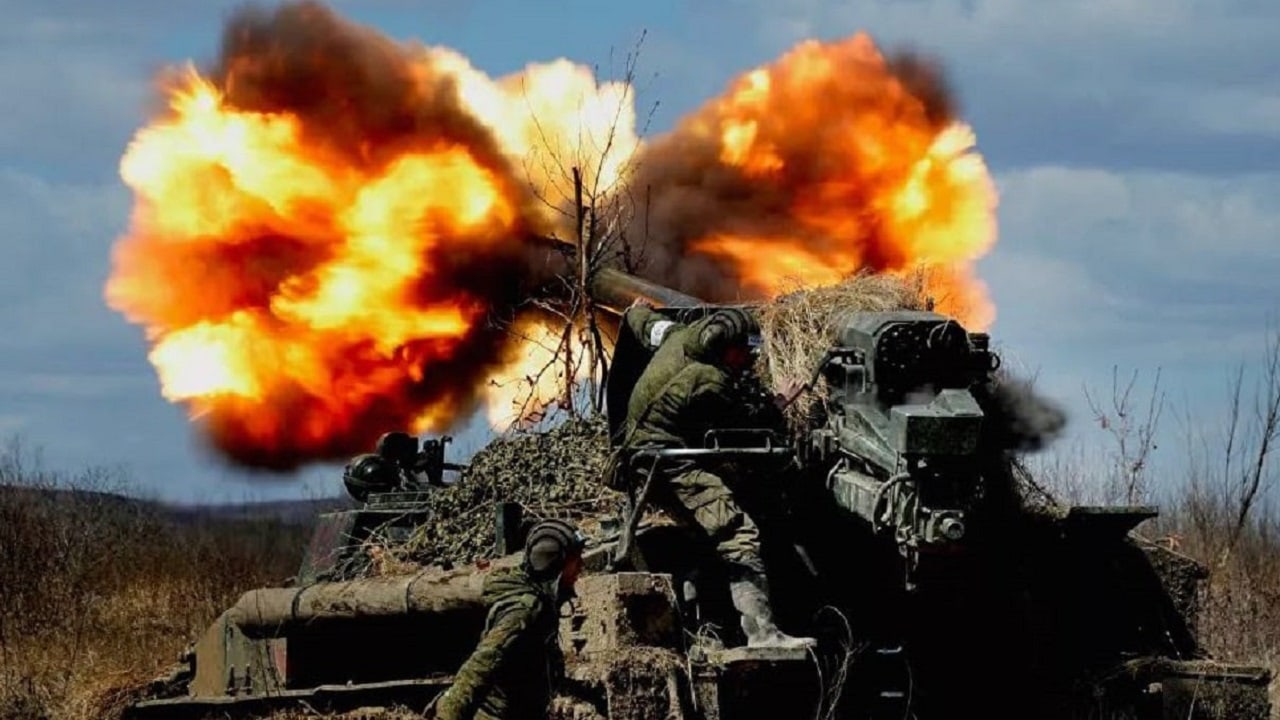2S7 Malka: The Big Russian Guns Are Out to Endanger Ukrainian Citizens – Artillery fire in Ukrainian cities is raining down on military and civilian targets causing death and wounding to several hundreds of innocent men, women, and children. The Russians have brought out the heavy firepower to bombard indiscriminately. The 2S7 Malka 203mm self-propelled howitzer is a mammoth, and due to its outsized lethality, it’s worth taking a closer look at this death-dealing gun.
2S7 Malka: This Gun Is a Force to Be Reckoned With
The Malka, also called the Pion (Russian for Peony), is a devastating artillery piece and is known as one of the most powerful guns in the world. The Malka is the modernized version of the Pion. You can’t miss its elongated tube with no turret and its lengthy tracks that were specifically designed from components of the T-80 tank chassis.
It Needs 14-Soldiers To Fire
The system is 42-feet long and weighs 46-tons. The shells it fires are more dangerous than the 152mm and 155mm rounds that most Russian artillery pieces use. The gun takes seven-soldiers to deliver its 203mm shells. These seven ride in the howitzer while another seven crew members are assigned to the gun and travel in a support vehicle.
The 2S7 Malka Delivers Firepower
This video below gives you an idea of the Malka’s thunderous firepower. The crew loads the shell into the auto-loader and then the tube belches flame and the entire system rocks backward and even jumps off the ground slightly. The rate of fire is slower than other artillery at 2.5 rounds per minute, but the firepower makes up for the lack of re-loading speed. The cannon can fire two shells and then move to another position to avoid enemy fire. But the howitzer is slow with only a 780 horsepower V-46 four-stroke diesel engine, the heavy vehicle can get stuck in the mud.
The #Russian 2S7 Malka ( mordenised Pion) pic.twitter.com/q9tUyWowm4
— Ninjamonkey ?? (@Aryan_warlord) March 22, 2022
It’s a Deadly System
Each shell is 220-pounds, and the high-explosive warhead is 39-pounds. One shot can destroy an entire building 20-miles away. If the round misses its target, it can create a 16-foot crater. The Malka can also fire rocket-assisted and concrete-piercing shells. It is even nuclear-capable and can launch tactical battlefield nuclear weapons.
Upgrades Make It Ready for Ukraine
The Pion entered service in 1976, so it needed some work to improve it for the battlefield in the 1980s. Further modifications happened in 2020 so the updated Malka can use targeting acquired by drones. The modernization of the Pion gave the system an improved power supply, better fire control and communications, and an updated guidance system.
Now the 2S7 Malka is the king of battle. The Russians built hundreds of the howitzers over the years – many for export to Soviet republics during the Cold War. Russian now has around 60 units.
Deep Strike Capability
“This is one of the world’s most powerful self-propelled guns designated to strike vital enemy targets and facilities in the tactical depth of defense behind the front line,” said CEO Dmitry Semizorov of the defense contractor Uraltransmash who was quoted in the National Interest.
The Russians will likely use the Malka to destroy residential targets in Kyiv, Mariupol, and Kharkiv. This will be considered a high-value target by the Ukrainians. They will want to use counter-battery fire, airstrikes, and drone attacks to remove the Malka from the battlefield. Until then, the gargantuan howitzer will rain down heavy shells in an indiscriminate bombing against civilians.
Now serving as 1945’s Defense and National Security Editor, Brent M. Eastwood, PhD, is the author of Humans, Machines, and Data: Future Trends in Warfare. He is an Emerging Threats expert and former U.S. Army Infantry officer. You can follow him on Twitter @BMEastwood.

